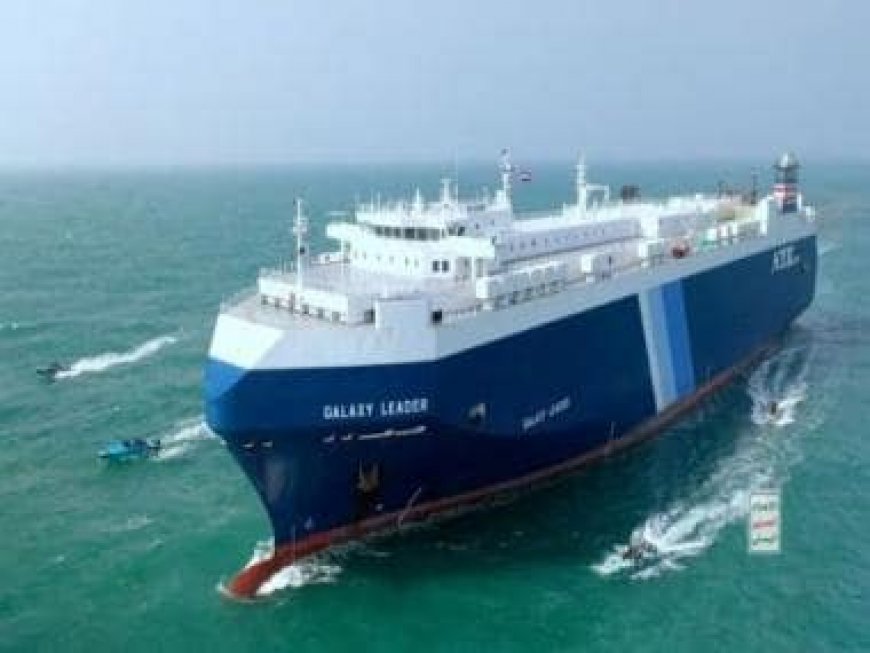Red Sea shipping crisis: Freight costs likely to jump by 25-30 per cent, weeks of delays amid sustained disruptions
Red Sea shipping crisis: Freight costs likely to jump by 25-30 per cent, weeks of delays amid sustained disruptions

Continuous disruptions in the Red Sea route could lead to a significant increase in freight and forwarding (F&F) costs, potentially rising by 25-30% for corporations heavily involved in international trade, according to a report released on Friday by credit rating agency Ind-Ra.
The report also highlighted that the working capital cycle may worsen by 15-20 days, with sectors like agriculture and textiles likely to experience even greater impacts.
The ongoing attacks on container vessels in the Red Sea have severely affected one of the world’s most crucial trade routes for several weeks. Shipping giant Maersk cautioned on Thursday that the disruption might persist for up to a year, exacerbating challenges for global trade.
Since attacks by Yemen’s Houthi rebels on ships in the Red Sea began in November, he said, major players in the shipping industry have temporarily halted using Egypt’s Suez Canal, a critical waterway connecting the Mediterranean Sea to the Red Sea and a vital route for energy and cargo between Asia and Europe.
The Suez Canal handled 12% to 15% of global trade in 2023, but UNCTAD estimates that the trade volume going through the waterway dropped by 42% over the last two months,.
Since November, the Iranian-backed Houthis have launched at least 34 attacks on shipping through the waterways leading to the Suez Canal. The Houthis support the Palestinians and have vowed to keep attacking until the Israel-Hamas war ends.
The United States and Britain have responded with strikes against Houthi targets, but the rebels have kept up their attacks.
Working capital cycle refers to the period between payments made to suppliers and revenue received from sales. The report also said that pressures on cash flow, although moderate for large entities, will further increase borrowings, especially for sectors such as iron and steel, auto and auto ancillaries, chemicals and textiles, which have seen a year-on-year rise in net leverage in the first half of the current fiscal.
“The challenge is significant for the entities having low value addition therefore thin margins. Although large entities have adequate elbow room to accommodate such incremental cost, delays and disruptions in supply chains will be key factors to watch for,” said Soumyajit Niyogi, Director, Core Analytical Group, Ind-Ra.
For medium-sized entities, he said, the challenge is two-fold, both cost and supply, and consequently on working capital cycle. “These entities have not benefited much from the softening of commodity prices, as free cash flow has remained sluggish for most of them,” he stated.
The initial reaction can be seen in freight rates rising by 150 per cent in the past 45 days, the rating agency said.The route constituted 40 per cent of the total oil imports and 24 per cent of the total exports during April to October 2023, it said.
Major shipping lines have rerouted vessels around the Cape of Good Hope, which has increased time and costs, impacting both exports and imports, as per the report. This detour adds 12-15 days to voyages on a business as-usual basis; however, there could be a further delay owing to any sudden operational challenges, it said.
This detour is directly translating to a higher operational cost, along with freight and insurance and intermittent disruptions on account of ship size and cost dynamics. Although these disruptions have historically been short lived, a swift resolution seems improbable given the geopolitical standing, Ind-Ra said.
As much as 20-25 per cent of India’s foreign trade is routed through the Suez Canal, with key products such as crude oil, auto & auto ancillaries, chemicals, textiles and iron & steel being affected. Indian exports are facing higher shipping costs due to rerouting, leading to reduced export volumes, affecting small and medium-sized enterprises dealing with a high volume of low-value products.
On the import side, vital commodities such as crude oil, fertilisers, and electronic components face inflated costs due to the crisis, leading to higher landed prices and inflationary pressures, impacting various sectors of the Indian economy, the ratings agency said.
With inputs from agencies.
What's Your Reaction?



























































